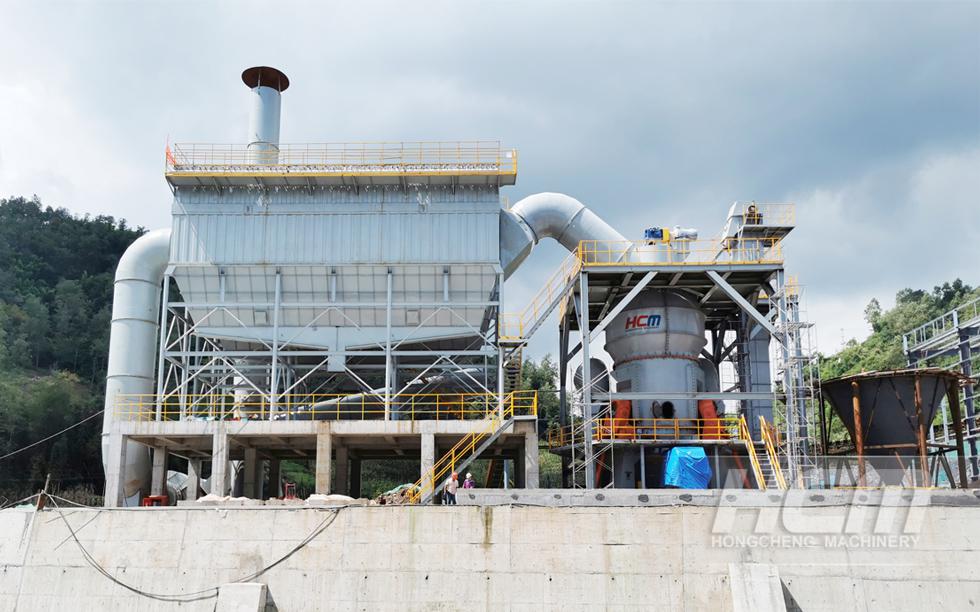Tailings are produced in the beneficiation process. Due to the low ore grade, a large number of tailings are produced in the beneficiation process, accounting for about 90% of the raw ore. The number of tailings in China is huge, and most of them are not effectively used. They are mainly stored in tailings ponds or landfill mines, causing waste of resources. The massive accumulation of tailings not only occupies a lot of land resources, but also pollutes the environment and affects people’s health. Therefore, the comprehensive utilization of tailings is an urgent problem to be solved in China’s mining industry. HCMilling(Guilin Hongcheng), as the manufacturer of tailings vertical roller mill, will introduce the method of preparing cement clinker from tailings.
The main minerals in the sulphoaluminate cement clinker are calcium sulphoaluminate and dicalcium silicate(C2S). Calcium, silica, aluminum and sulfur raw materials are required in the preparation process. As the sulphoaluminate cement clinker has a wide range of materials and low requirements for grade, solid waste can be appropriately used to replace some raw materials. The main chemical components of tailings include SiO2, Fe2O3, Al2O3, CaF2, etc., as well as a small amount of W, Mo, Bi and other trace elements. Because the chemical components of tailings are similar to the properties of silica raw materials used to prepare sulphoaluminate cement clinker, tailings can be used to replace silica raw materials, which not only saves land resources, but also protects the environment. CaF2 in tungsten tailings is a highly effective mineralizer, which can promote the formation of various minerals in the clinker and reduce the sintering temperature of the clinker. At the same time, the cement clinker can solve Ti in titanium gypsum and W, Mo, Bi and other trace elements in tungsten tailings. Some elements can enter the crystal lattice of the mineral. Because the radius of the entered elements is different from the original lattice elements, the lattice parameters will change, resulting in lattice distortion, It can improve the activity of minerals and change the properties of clinker.
The method of preparing cement clinker from tailings: use tailings to completely replace siliceous raw materials used in the production of conventional sulphoaluminate cement clinker, and partially replace aluminum raw materials. After grinding to a certain fineness, control the formation of cement clinker and C2S minerals through alkalinity coefficient Cm and sulfur aluminum ratio P, and prepare sulphoaluminate cement clinker with aluminum ash, calcium carbide slag, titanium gypsum and other ingredients. The steps are as follows: tailings, aluminum ash, carbide slag and titanium gypsum are respectively ground to less than 200 meshes; Weigh each raw material component according to the raw material ratio, mix and stir evenly, press the mixture into test cake with a tablet press, and dry it for 10h~12h at 100℃~105℃ for standby; The prepared test cake is put into the high temperature furnace, heated to 1260℃~1300℃, kept for 40~55min, and quenched to room temperature to obtain tungsten tailings sulphoaluminate cement clinker. Among them, the use of tailings vertical roller mill for grinding is the main process step.
HCMilling(Guilin Hongcheng) is the manufacturer of tailing vertical roller mill. Our HLM series tailing vertical roller mill can grind 80-600 mesh tailing powder, providing good equipment support for the method of preparing cement clinker from tailing. If you have relevant purchase requirements, please contact HCM for details of the equipment.
Post time: Nov-10-2022









